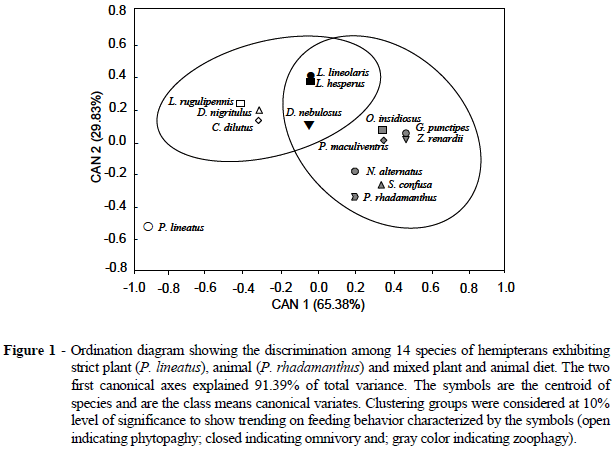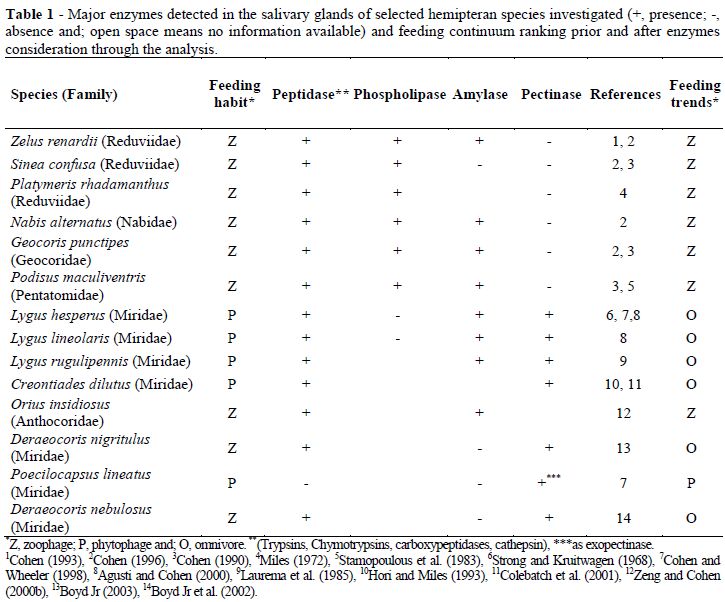Predaceous hemipteran feeding on different trophic levels have raised questions about their ecology and role in biological control. Therefore, specific adaptations allowing them to simultaneously use plants and animals as sources for their nutritional requirements are important. Enzymatic variability in predatory hemipterans has been suggested as the basic adaptation for convergent or divergent to omnivory. Thus, the salivary enzymatic complexes of predatory hemipterans have been furnished a partial understanding of the mechanisms permitting switching between plant and animal food sources. In this study, a discriminatory analysis was performed to attribute trophic habits to each insect investigated based on the presence and absence of salivary enzyme combinations. Although peptidase is found in all tested predatory hemipterans' salivary glands, it is not a distinguishing enzyme because it has been found in phytophagous species as well. However, the presence of peptidase and amylase activity in hemipteran salivary glands is considered to be an explanation for these insects' ability to switch their diet, predators feeding on plants (amylase) and herbivores taking prey (peptidase).
Feeding behavior; salivary glands; phytophagy; zoophagy; biological control


